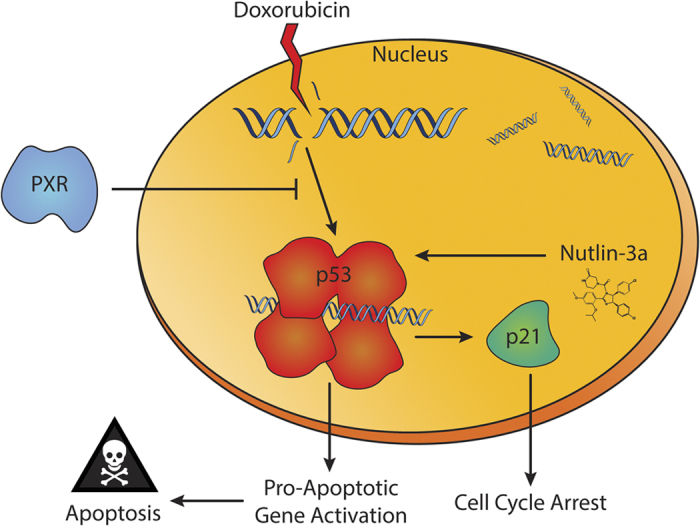Figure 5.

Schematic of PXR–p53 protein–protein interaction. Doxorubicin, a genotoxic chemotherapeutic drug, induces the DNA damage response via p53 activation. Nutlin-3a, a nongenotoxic drug, stabilizes and activates p53 by binding to MDM2 and disrupting the MDM2–p53 interaction. The tumor suppressor p53 can induce transcriptional activation of genes that induce cell cycle arrest, such as p21. In addition, p53 mediates the transcriptional activation of pro-apoptotic genes to induce various mechanisms of apoptosis. Expression of PXR can attenuate the transcriptional function of p53, decreasing the gene expression of cell cycle arrest and pro-apoptotic genes and thereby protecting cells from apoptosis and cell cycle arrest induced by genotoxic and nongenotoxic drugs and promoting malignant transformation.
